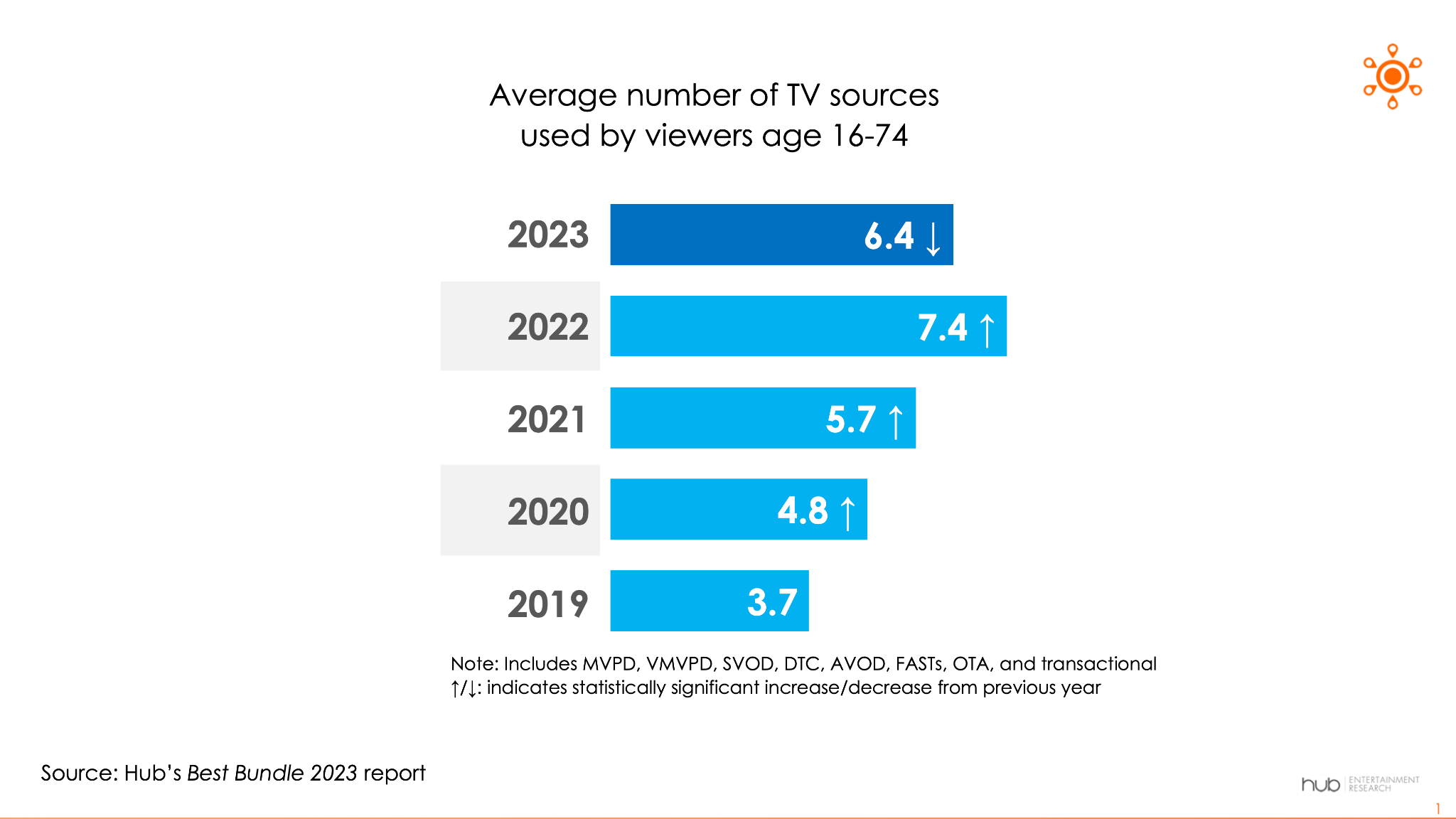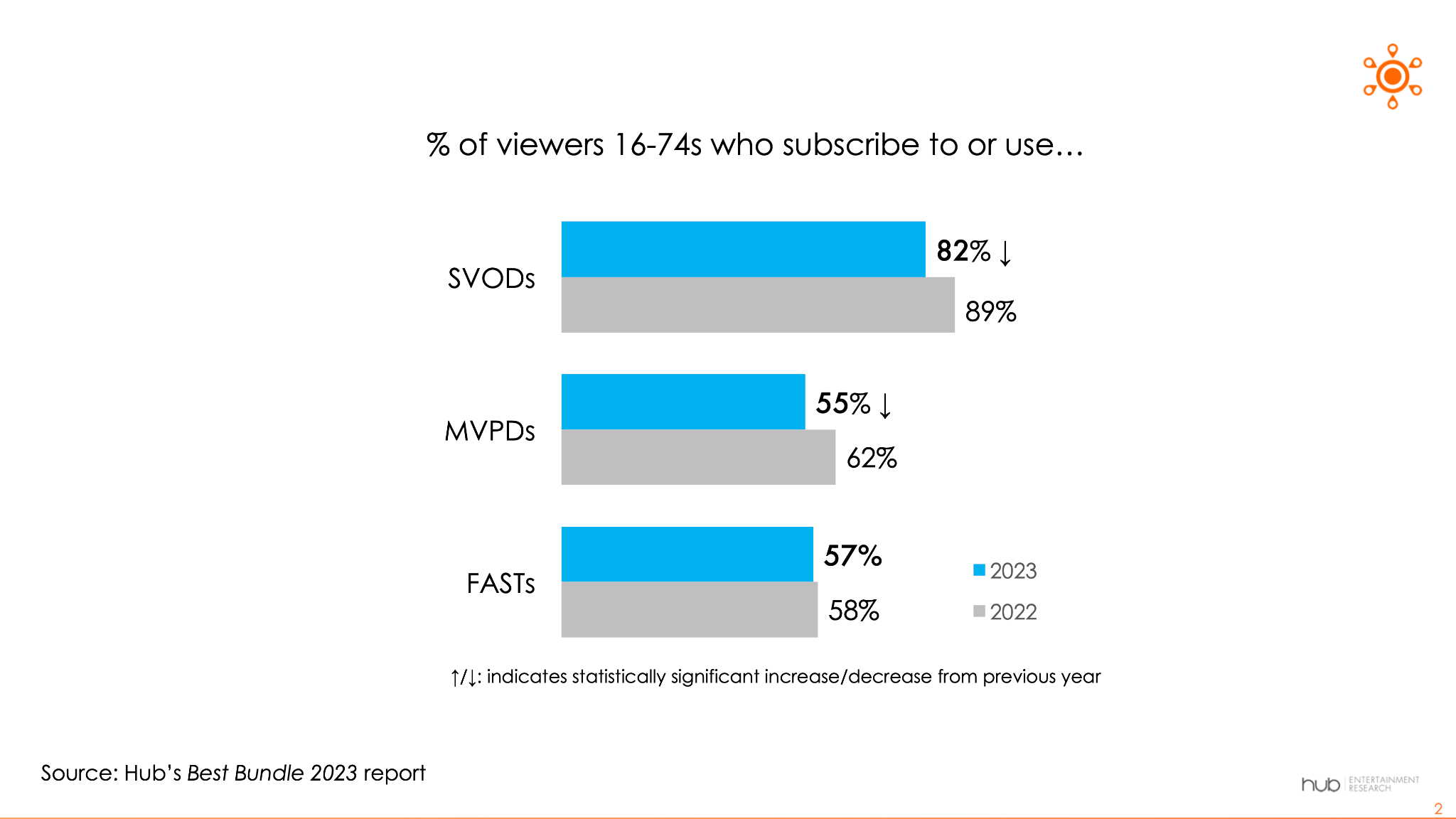
PORTSMOUTH, N.H.—In a development that is likely to prompt renewed debate over the saturation of streaming services and video options, Hub’s annual “Best Bundle” survey shows that for the first time in five years, viewers dialed down how many video services they “stacked” in 2023.
Consumers reported using fewer paid TV services while emerging free services saw little change, according to the HUB.
The big question is whether this is a short-term or long-term trend, the researchers said.
After showing strong growth – doubling between 2019 and 2022, from 3.7 to 7.4 – the average number of TV sources used by viewers has dropped in 2023 to 6.4. This decrease from 7.4 to 6.4 represents a relative decline of 14%. Although the causes for the drop are varied, it is likely inflation and perceptions about the economy are the primary reasons, the researcher said.

The data also showed declines in both traditional and streaming subscriptions. Comparisons with 2022 data show fewer viewers report having a streaming subscription (from “subscription video-on-demand” services, or SVODs) this year, with levels declining from 89% to 82%. Traditional subscription TV (from “multichannel video programming distributors”, or MVPDs) dropped from 62% of viewers to 55%. vMVPDs (streaming-only MVPDs, or “virtual MVPDs”) showed no statistically significant change.
Reinforcing what the researchers are calling a trend towards “de-stacking” is the finding that a smaller share viewers report currently having subscriptions to three or more of the “Big 5” SVODs (Netflix, Hulu, Amazon, HBO Max, or Disney+). In 2022, half (50%) reported 3 or more subscriptions; in 2023, this has dropped to 42%.








